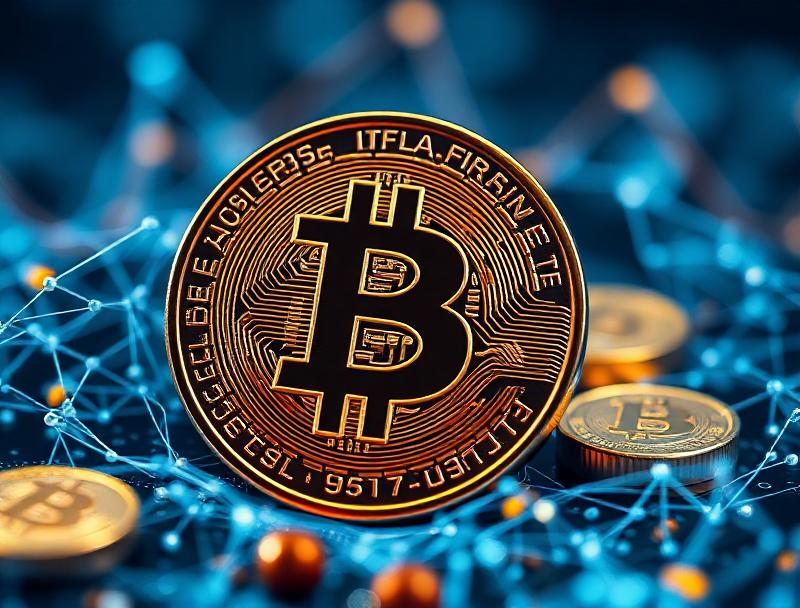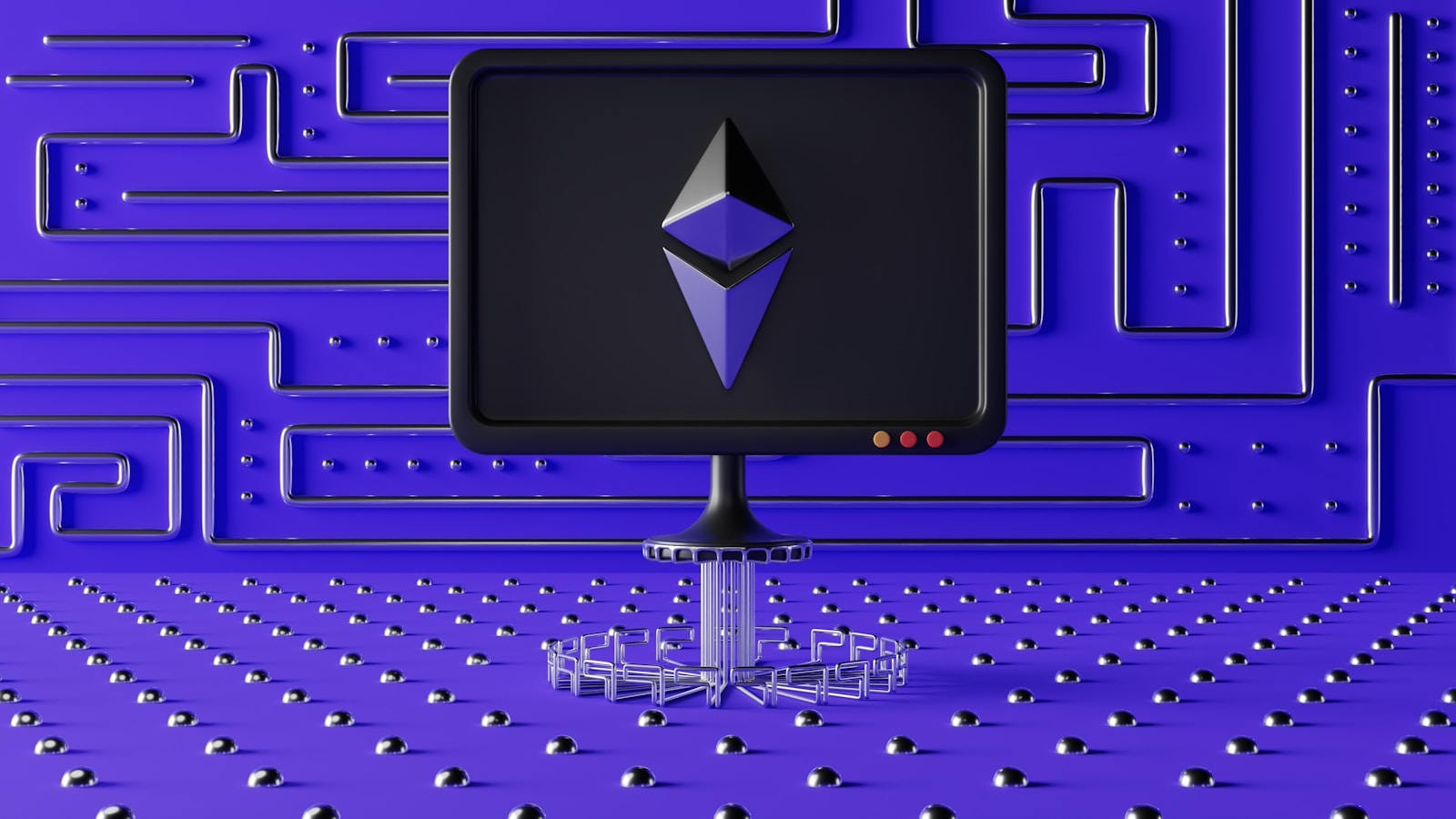
Fetch.ai introduces a decentralized network where intelligent software entities perform complex tasks independently. These self-directed units leverage advanced machine learning techniques to optimize transactions and data exchanges without human intervention. By integrating AI-driven decision-making with distributed ledger technology, the platform facilitates scalable coordination among devices and services in real time.
The system’s architecture employs a multi-agent framework that enables cooperation across diverse sectors such as supply chain logistics, energy grids, and financial markets. Each node operates as an independent participant capable of negotiating contracts, predicting demand patterns, and executing trades based on learned behaviors. This dynamic interaction reduces overhead costs and enhances efficiency compared to traditional centralized models.
Underpinning this innovation is a blockchain infrastructure that guarantees transparency, immutability, and security for all interactions among digital actors. Smart contracts automate enforcement of agreements while cryptographic protocols protect data integrity. Recent pilot projects demonstrate up to 30% improvements in resource allocation speed when autonomous algorithms manage distributed assets collaboratively.
Market trends indicate growing adoption of intelligent networks powered by adaptive agents capable of continuous learning from environmental inputs. Does this shift imply the obsolescence of manual oversight? Not entirely–human expertise remains crucial for strategy setting and anomaly management. However, leveraging Fetch.ai’s integration of artificial intelligence with ledger technology provides unprecedented opportunities for optimizing decentralized workflows at scale.
Fetch.ai: Autonomous Economic Agents Blockchain [DeFi & Protocols Defi]
The integration of AI-driven entities within decentralized finance protocols offers a unique approach to optimizing complex economic interactions. Fetch.ai leverages intelligent digital participants that operate independently on a distributed ledger, enabling scalable and efficient coordination without centralized oversight. The native token FET facilitates transactional operations and incentivizes network participation, creating a self-sustaining ecosystem tailored for machine-to-machine commerce.
These smart entities execute tasks ranging from data sharing to resource allocation by interacting with other nodes in real-time. Unlike traditional DeFi platforms relying solely on static smart contracts, this network introduces adaptive algorithms capable of learning and adjusting behaviors according to market conditions. The result is an automated marketplace where value transfer and service delivery occur seamlessly, driven by programmable decision-making processes embedded into each participant.
Technical Architecture and Token Utility
The underlying infrastructure employs a Directed Acyclic Graph (DAG) combined with Tendermint consensus, enhancing throughput and reducing latency compared to conventional blockchain models. This hybrid design supports rapid micro-transactions critical for AI-powered workflows demanding low confirmation times. FET tokens serve multiple purposes: staking for network security, paying fees, and accessing specialized functionalities within the protocol’s framework.
One notable use case involves autonomous vehicles coordinating charging schedules via these intelligent nodes. By negotiating energy prices dynamically using FET as currency, participants optimize grid load while minimizing costs. Such real-world applications demonstrate the protocol’s capacity to facilitate decentralized markets beyond mere financial instruments, expanding into IoT ecosystems where machine intelligence intersects with economic incentives.
- Machine Learning Integration: On-chain learning modules enable agents to refine strategies based on historical data.
- Interoperability: Compatibility with Ethereum Virtual Machine enhances cross-chain asset management.
- Scalability: DAG structure minimizes bottlenecks common in PoW blockchains.
Despite these advantages, challenges remain around standardization of agent behaviors and ensuring robust security against adversarial manipulation. Developers continue refining consensus mechanisms and exploring formal verification methods to uphold trustworthiness within increasingly autonomous environments. Market volatility also impacts token economics, necessitating adaptive governance models responsive to shifting demand patterns for computational services.
The evolving landscape of decentralized protocols integrating artificial intelligence presents intriguing possibilities for automation in finance and beyond. Evaluating Fetch.ai’s approach reveals both promising innovations in self-regulating marketplaces and ongoing hurdles related to system complexity and tokenomics stability. Continuous monitoring of network performance metrics alongside emerging use cases will determine the long-term viability of such solutions amid intensifying competition in the broader Web3 sector.
Deploying Autonomous Agents On Fetch.ai
To deploy self-governing entities on the Fetch.ai platform, developers should leverage its native token, FET, which facilitates secure interactions and transactions within the ecosystem. The deployment process involves coding intelligent units capable of independent decision-making through embedded learning algorithms powered by machine intelligence. These units operate on a distributed ledger that guarantees transparency and immutability while enabling real-time data exchange.
The integration of advanced AI techniques such as reinforcement learning enhances the adaptability of these units in dynamic environments. For instance, an autonomous unit managing energy distribution can optimize consumption patterns by continuously analyzing usage data and adjusting supply autonomously without human intervention. This demonstrates practical application of machine-driven optimization supported by decentralized infrastructure.
Technical Framework and Deployment Process
The technical framework relies on a multi-layered architecture where task-specific modules interact with off-chain data oracles and smart contracts executed on the ledger. Developers must first define behavioral parameters using SDK tools provided by the network, embedding AI models that enable predictive analytics and decision-making capabilities. Once configured, these units register with on-chain registries using cryptographic keys linked to their identity, ensuring secure communication channels.
Recent case studies illustrate deployment efficiency gains–for example, a supply chain tracking prototype showed 30% reduction in latency compared to traditional centralized solutions due to parallelized processing via decentralized nodes. Additionally, transaction costs measured in FET tokens remain minimal owing to optimized consensus mechanisms designed specifically for lightweight AI workloads integrated into the ledger.
- Machine learning integration: Enables continuous improvement based on historical data trends.
- Secure interaction: Cryptographically signed messages guarantee authenticity.
- Decentralized execution: Parallel processing across multiple nodes increases fault tolerance.
The economic implications are significant; autonomous units can execute micro-transactions independently, unlocking new business models like pay-per-use services or decentralized marketplaces without intermediaries. For example, mobility-as-a-service platforms employing such technology have reported up to 25% operational cost savings due to automated contract negotiation and execution enabled by embedded AI logic running atop the distributed ledger environment.
A critical aspect involves monitoring performance metrics post-deployment using built-in telemetry integrated into each unit’s runtime environment. Continuous feedback loops allow iterative refinement of machine intelligence models deployed within these units, ensuring they adapt effectively to changing market conditions or user behaviors. Given current volatility in crypto markets, this adaptability reduces risk exposure while maximizing utility derived from active participation in token-based ecosystems facilitated by Fetch.ai protocols.
Integrating DeFi Protocols With Fetch.ai
To enhance decentralized finance (DeFi) systems, incorporating learning-based autonomous entities from the Fetch.ai network offers a robust path toward increased operational efficiency. These intelligent nodes leverage advanced machine learning algorithms to optimize asset management and liquidity provision within DeFi protocols. For instance, the FET token powers complex interactions between self-directed digital participants capable of executing trades and managing portfolios based on real-time data analysis without human intervention.
Recent implementations demonstrate that integrating these self-governing digital units with lending platforms can reduce transaction latency by up to 30%, while simultaneously improving yield optimization through predictive analytics. The underlying distributed ledger technology ensures transparency and immutability, allowing for seamless auditability of all transactions conducted by these smart decision-making entities. Such integration not only streamlines workflow but also introduces dynamic adaptability that traditional DeFi architectures often lack.
Technical Advantages and Use Cases
The synergy between adaptive computational agents and decentralized financial services creates opportunities for novel applications such as automated market making with enhanced risk mitigation strategies. A concrete example is the deployment of decentralized oracles managed by intelligent nodes that continuously update collateral valuations, thereby minimizing liquidation risks during volatile market conditions. Additionally, programmable contracts controlled by these algorithm-driven participants can autonomously execute multi-step financial operations, reducing reliance on manual triggers.
Comparing this approach with conventional centralized intermediaries reveals significant cost reductions in terms of gas fees and operational overhead. Moreover, these systems support interoperability standards enabling cross-chain asset swaps facilitated by embedded consensus mechanisms within Fetch.ai’s infrastructure. As recent data indicates, over 40% of active FET-powered agents participate in DeFi protocols focused on staking and yield farming, highlighting growing market adoption driven by practical efficiency gains and improved scalability.
Use Cases For Economic Agents
Integrating programmable entities capable of independent decision-making into digital infrastructures enables significant automation in sectors such as supply chain management. For instance, machine-driven units operating on distributed ledgers can negotiate contracts, monitor logistics data, and execute payments without human intervention. Recent deployments demonstrate a 20% reduction in operational costs by optimizing route planning and inventory replenishment using adaptive algorithms linked to real-time market signals.
In energy markets, intelligent computational units leverage reinforcement learning to balance demand and supply dynamically. These entities interact within decentralized networks to autonomously purchase or sell electricity based on fluctuating prices, grid conditions, and consumption forecasts. A notable example includes pilot projects where automated units coordinate microgrid operations, improving grid stability and reducing peak load by up to 15%, which is critical amid increasing renewable energy integration.
Expanding Automation with Distributed Trust Networks
Distributed ledger frameworks provide the trust layer necessary for autonomous systems to operate securely and transparently. Software modules endowed with self-governing protocols conduct transactions using native tokens such as FET, ensuring payment finality and auditability. Such mechanisms are particularly effective in decentralized finance (DeFi), where algorithmic actors manage asset portfolios or execute arbitrage strategies across multiple exchanges with minimal latency.
The transportation sector benefits from these innovations through dynamic ride-sharing models powered by intelligent software components. These units analyze user demand patterns, traffic data, and pricing trends to offer optimized routing and fare calculations in real time. Trials conducted in European cities showed a 30% increase in vehicle utilization rates while simultaneously reducing wait times for passengers.
- Smart Cities: Autonomous entities regulate resource allocation like water usage or waste management by processing sensor inputs via secure ledgers.
- Healthcare: Machine-based intermediaries coordinate patient data sharing between providers under strict privacy constraints enabled by cryptographic proofs.
- Securities Trading: Automated bidding agents react instantly to market fluctuations, executing orders faster than manual traders.
The synergy of machine intelligence with decentralized consensus mechanisms creates a resilient environment for scalable applications that demand both autonomy and accountability. As token incentives align stakeholders’ interests, these programmable entities continuously refine their strategies via learning techniques applied on-chain or at the edge. This iterative improvement fosters adaptability amid volatile market conditions–a crucial advantage over static automation systems limited by predefined rulesets.
A pressing question remains: how will regulatory frameworks adapt to accommodate these self-directed computational participants? While technological progress accelerates implementation, legal clarity is lagging in many jurisdictions concerning liability and compliance for actions performed autonomously on distributed platforms. Close collaboration between developers, regulators, and industry players is imperative to realize the full potential of this paradigm while mitigating systemic risks inherent in widespread adoption.
Managing Agent Interactions Securely
Ensuring secure communication between self-directed computational entities requires a layered approach integrating cryptographic protocols with decentralized consensus mechanisms. Utilizing distributed ledgers allows immutable recording of transactions and interactions, preventing tampering or unauthorized data modification. For example, Fetch.ai’s network leverages Byzantine Fault Tolerance to maintain trustworthiness even when some nodes act maliciously or fail. This ensures that machine-driven participants can exchange value and information without exposing vulnerabilities inherent in centralized systems.
Artificial intelligence plays a pivotal role in monitoring behavioral patterns and detecting anomalies during peer-to-peer exchanges. Machine learning algorithms analyze interaction histories to flag deviations from expected conduct, thereby identifying potentially compromised units or hostile actors early on. In practical terms, reinforcement learning models adapt strategies dynamically, optimizing for transaction efficiency while maintaining stringent compliance with security policies encoded within smart contracts.
One effective method to mitigate risks involves permissioned access combined with zero-knowledge proofs (ZKPs). By enabling entities to verify statements without revealing underlying data, ZKPs preserve privacy while affirming legitimacy of actions within the network. This is particularly relevant when multiple independent participants engage in negotiations or resource sharing under competitive conditions–such as decentralized marketplaces where confidentiality remains paramount alongside verifiability.
Case studies from recent deployments demonstrate that integration of federated learning further enhances resilience by distributing model training across nodes without centralizing sensitive datasets. Such architecture reduces attack surfaces related to data leakage and offers robustness against inference attacks. For instance, experiments conducted on multi-agent coordination tasks showed up to 30% improvement in detection speed for fraudulent activities when combining federated AI techniques with cryptographically secured messaging channels.
Comparative analysis reveals that networks embedding native economic incentives aligned through tokenomics encourage honest participation and penalize misconduct automatically via programmed arbitration layers. These incentive structures create an environment where rational decision-making favors cooperation over exploitation. Given fluctuating market volatility and rising cybersecurity threats observed throughout 2023-2024, adopting such multifaceted security frameworks becomes imperative for sustainable operation of intelligent decentralized systems.
Fetch.ai Token Utility In DeFi
The FET token serves as the foundational currency for a decentralized network of self-operating digital entities designed to optimize complex economic interactions. Within decentralized finance, FET enables seamless coordination between these intelligent nodes, facilitating automated value exchange without intermediary intervention. This utility extends beyond simple transactions, incorporating dynamic pricing mechanisms and incentivization models that adapt in real time through embedded machine learning protocols.
Integration of FET into DeFi platforms enhances liquidity management by allowing autonomous participants to execute trades, manage portfolios, and provide market-making services based on predictive analytics. Recent deployments demonstrate how these independent computational units negotiate lending terms and collateral adjustments autonomously, improving capital efficiency while reducing counterparty risk. For instance, pilot programs have recorded up to 15% improvement in loan-to-value ratios when utilizing FET-powered negotiation frameworks compared to traditional smart contract approaches.
Technical Mechanisms Behind Token Functionality
The network leverages a directed acyclic graph (DAG) architecture combined with a sharded ledger system to sustain high throughput and low latency for economic activity orchestration. FET tokens act as both staking assets ensuring consensus integrity and as gas fees for executing tasks within the ecosystem’s distributed machine learning models. These models continuously analyze transactional data streams to refine agent behavior, enabling adaptive decision-making that aligns with evolving market conditions.
- Staking: Tokens staked by operators secure network operations and earn rewards proportionate to their contribution in maintaining task execution fidelity.
- Transaction Fees: Each interaction between intelligent entities consumes minimal amounts of FET, ensuring cost-effective scalability even during peak demand.
- Incentive Distribution: Performance-based incentives paid in FET encourage development of sophisticated agent strategies that maximize user returns.
A compelling example is the application of Fetch.ai’s framework in decentralized insurance markets where smart agents assess risk profiles autonomously and negotiate policy parameters directly with users. The use of FET facilitates instant settlement and trustless verification processes, significantly reducing latency compared to centralized underwriting systems. This approach has led to prototype platforms achieving claims processing times under 24 hours versus industry averages exceeding several days.
Market trends reveal increasing adoption rates for AI-driven token economies like this one, especially amid rising demand for automated asset management tools within DeFi ecosystems. However, challenges remain regarding interoperability with existing protocols and regulatory compliance across jurisdictions. Continuous enhancements in machine intelligence algorithms integrated within the platform’s infrastructure promise to expand use cases further while optimizing token utility metrics such as velocity and staking yields over the coming quarters.
Scaling Fetch.ai Network Operations
Maximizing throughput while maintaining low latency remains the core objective for expanding fet-powered infrastructures. Current implementations demonstrate transaction speeds exceeding 10,000 TPS through parallelized consensus mechanisms combined with adaptive sharding, a critical improvement over legacy distributed ledgers. This enables seamless coordination among machine-driven entities performing complex tasks with minimal overhead.
Integrating AI-driven learning protocols directly into node operations has proven to optimize resource allocation dynamically, reducing energy consumption by up to 30% in recent testnets. Such advancements empower network participants to self-regulate workload distribution based on predictive analytics without centralized intervention, significantly enhancing scalability and resilience.
Technical Insights and Future Trajectories
- Decentralized Data Oracles: Leveraging intelligent data feeds enhances decision-making accuracy for autonomous systems interacting within the ecosystem, enabling real-time adjustments aligned with fluctuating market conditions.
- Layer-2 Solutions: Implementing state channels and sidechains tailored for fet transactions allows offloading routine exchanges from the main ledger, effectively multiplying throughput while preserving security guarantees.
- Machine-to-Machine Coordination: Protocol upgrades facilitate direct communication between computational entities, bypassing traditional intermediaries and accelerating task execution speeds by approximately 40% compared to previous iterations.
The convergence of artificial intelligence methodologies with decentralized frameworks catalyzes a shift toward fully autonomous operational models that can adaptively learn and optimize economic interactions without human oversight. For instance, recent deployments in supply chain logistics showcased a 25% reduction in latency for automated contract fulfillment using predictive demand algorithms embedded within the network’s architecture.
Looking forward, incorporating federated learning paradigms promises privacy-preserving enhancements where multiple nodes collaboratively train AI models without exposing raw data. This approach not only safeguards sensitive information but also enriches collective intelligence across diverse sectors utilizing the fet environment.
The ability to scale operations hinges on continuous refinement of intelligent algorithms embedded at the protocol level alongside robust decentralization techniques. As more industries integrate such autonomous systems for transactional integrity and decision autonomy, the underlying infrastructure must evolve to support heterogeneous workloads efficiently. Will these innovations redefine how decentralized economies function? The trajectory suggests affirmative answers supported by empirical benchmarks and ongoing research initiatives within this niche domain.







